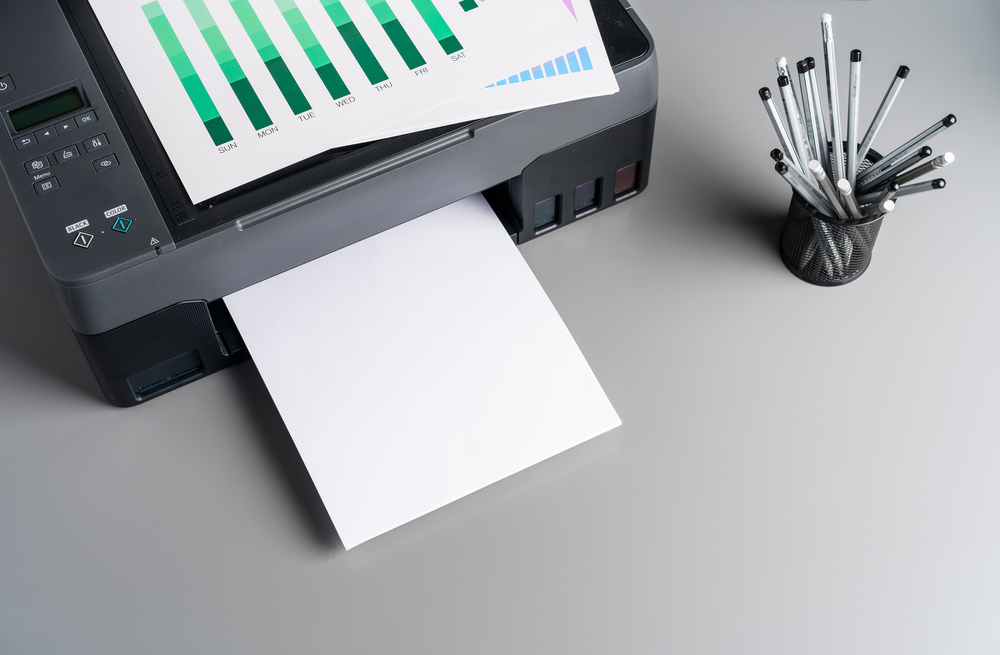The Rise of Ink Tank Printers: Pros and Cons
In today's fast-paced digital age, PRINTERS remain a fundamental tool for both personal and professional use. However, the traditional ink cartridge model has faced criticism for its inefficiency and costliness. Enter the revolutionary INK TANK PRINTERS, a game-changer in the printing industry.
Ink tank printers, also known as continuous ink system printers, have been gaining significant traction in recent years. Unlike their traditional counterparts, which rely on costly cartridges that need frequent replacement, ink tank printers utilize refillable ink tanks that can be replenished when needed. This innovative approach offers several advantages and disadvantages worth exploring.
- Summary
- Pros of Ink Tank Printers
- Benefits of using an ink tank printer
- Cons of Ink Tank Printers
- Conclusion
Pros of Ink Tank Printers:
- Cost Efficiency: One of the most significant advantages of ink tank printers is their cost-effectiveness. With traditional ink cartridges, users often find themselves spending a considerable amount of money on replacements. In contrast, ink tank printers allow for bulk ink purchases, significantly reducing long-term expenses.
- High-Quality Printing: Despite their cost efficiency, ink tank printers do not compromise on print quality. These printers are capable of producing sharp, vibrant prints, making them suitable for a wide range of applications, from documents to photographs.
- Longer Lasting: Ink tank printers typically hold more ink than traditional cartridges, resulting in fewer interruptions for refills. This extended ink capacity is particularly advantageous for high-volume printing environments, such as offices or classrooms.
- Environmentally Friendly: By reducing the need for frequent cartridge replacements, ink tank printers contribute to environmental sustainability. The refillable ink tanks generate less plastic waste, making them a greener alternative to traditional printing methods.
- Convenience: Refilling ink tanks is a straightforward process that can be performed quickly and without professional assistance. This convenience saves time and eliminates the hassle associated with replacing cartridges.
"Ink tank printers offer a cost-effective solution for high-quality printing, but users should be mindful of potential challenges such as ink spillage and print head clogging."

Benefits of using an ink tank printer:
When it comes to pros and cons of ink tanks, there are some stark differences when compared to conventional ink cartridges. To start with, printing costs from refillable ink printers are extremely low.
Continuous ink printers supply significantly lowers the cost of printing; particularly for high color photos and prints. Then, there are page yields. Ink tanks can churn out up to 6,000 to 7,000 pages from a single refill. This is considerably higher than conventional cartridges. A final positive for ink tank printers is that there is a slightly increased quality of printing. By having an integrated bulk ink system as a standard feature, you will overcome the disadvantages of third-party manufacturing. Not to mention the risk of counterfeit printer cartridges. All ink tanks are specifically formulated for the printer itself, leading to the very best print quality. Users of ink tanks can enjoy reliable color printing with the mess or hassle that is often associated with non-genuine refills.
Reduced on-going printing costs. Larger page yields per refill. Higher quality printing overall.Should you be a regular printer of color documents, you are most likely to see the benefits of ink tanks. However, for the less frequent printer, all the positives of ink tanks are somewhat lost.
Cons of Ink Tank Printers:
- Initial Investment: While ink tank printers offer long-term cost savings, the initial purchase price can be higher compared to traditional printers. Some consumers may be deterred by this upfront investment, especially if they do not anticipate high printing volumes.
- Risk of Ink Spillage: Refilling ink tanks requires careful handling to avoid spills or leaks. Accidental ink spillage can be messy and potentially damaging to the printer or surrounding surfaces, necessitating caution during the refilling process.
- Prone to Clogging: Ink tank printers may be more prone to print head clogging compared to traditional cartridge printers. This issue can arise if the printer is not used regularly or if low-quality ink is used for refills. Regular maintenance is essential to prevent clogs and maintain optimal print quality.
- Limited Compatibility: Not all ink tank printers are compatible with third-party ink refills. Some manufacturers design their printers to only accept proprietary ink cartridges or refills, limiting consumer choice and potentially increasing long-term costs.
- Space Requirements: Due to their ink tank design, ink tank printers may be bulkier in size compared to traditional printers. This can be a consideration for users with limited desk or storage space.
Conclusion:
ink tank printers represent a significant advancement in printing technology, offering a cost-effective and environmentally friendly alternative to traditional cartridge printers. While they boast numerous benefits such as cost efficiency, high-quality printing, and longer-lasting ink, they also present challenges such as the initial investment, risk of ink spillage, and print head clogging. Ultimately, the decision to invest in an ink tank printer depends on individual printing needs and preferences.





